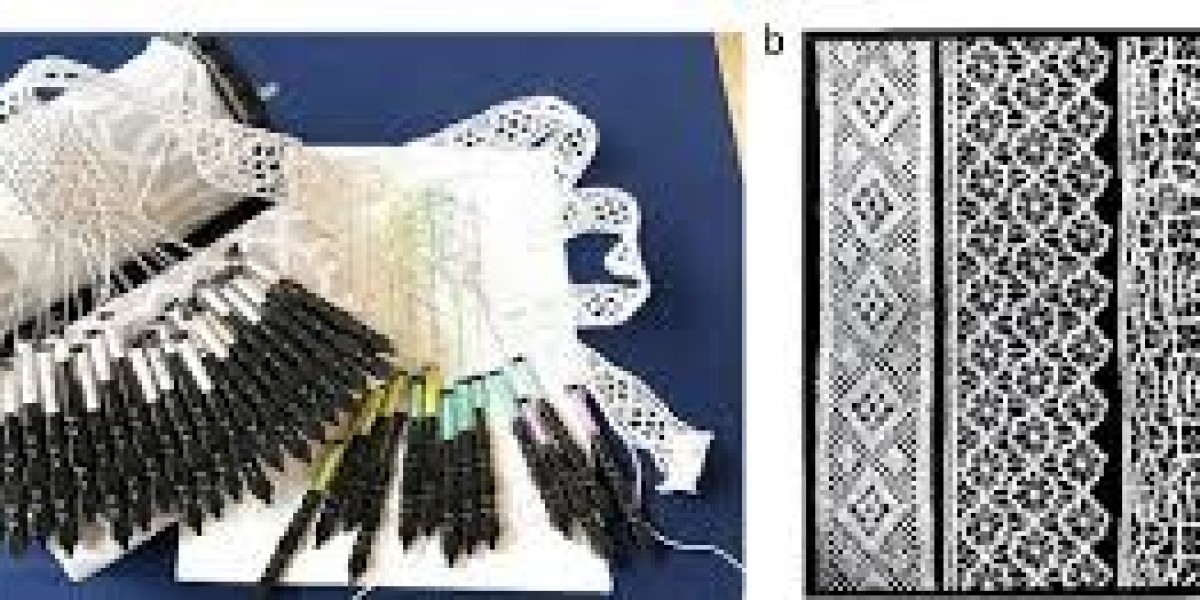Introduction
In a world driven by automation and creativity, the role of an embroidery digitizer is undergoing an inspiring transformation. No longer just a technician converting images into stitch files, the modern embroidery digitizer is now a hybrid of artist, engineer, and innovator. With AI and intelligent software tools dominating 2025, embroidery digitizing has evolved into a powerful craft, enabling businesses and hobbyists alike to produce highly detailed, scalable, and customizable designs with unmatched ease.
In this post, we'll explore how embroidery digitizers are leveraging cutting-edge technology, what tools are dominating the industry, and how you can excel in this evolving space.
What Is an Embroidery Digitizer?
An embroidery digitizer converts images, logos, or artwork into a digital file format that embroidery machines can read. These files include instructions for stitch types, directions, density, and color changes.
While once a manual and complex process, modern embroidery digitizing uses intuitive software—often powered by AI—to automate many of these tasks while preserving creative control.
Common File Formats Used:
.DST – Tajima machines
.PES – Brother machines
.EXP – Melco
.JEF – Janome
.VP3, .XXX, and more
The Evolution of Embroidery Digitizing Tools
The journey from manual punch cards to smart digitizing platforms highlights how far the industry has come:
1. Manual Punching (Pre-2000s)
Embroidery was digitized stitch-by-stitch with no visual interface.
2. Graphic Interfaces (2000–2015)
Tools like Wilcom and Pulse made digitizing visual and easier to manage.
3. AI-Powered Digitizing (2020–Present)
With automation, AI suggestions, and real-time previews, software tools have turned the embroidery digitizer into a design powerhouse.
Why AI Matters to Embroidery Digitizers in 2025
AI has significantly impacted the digitizing process:
Smart Stitch Path Optimization
AI calculates the most efficient stitch paths, saving thread, time, and machine wear.
Fabric-Specific Adjustments
Modern software identifies the best stitch types and density for chosen materials (e.g., leather, spandex, fleece).
Real-Time Preview
Digitizers can simulate results on different garments or patches instantly.
Autocorrect and Repair Suggestions
AI detects errors like overlapping stitches, jump stitches, or missing trims.
Top Software for Embroidery Digitizers in 2025
1. Wilcom Embroidery Studio e4.5+
Advanced tools with AI-enhanced auto-digitizing and design editing.
2. Embrilliance Essentials + StitchArtist
User-friendly for beginners and powerful for pros.
3. Hatch Embroidery 3
Includes built-in design libraries, real-time preview, and machine-specific settings.
4. SophieSew (Free)
Good for beginners who want to learn the basics.
5. Ink/Stitch (Open-source)
SVG to embroidery with extensions for Inkscape—great for vector lovers.
Skills Every Embroidery Digitizer Should Master
Understanding stitch types: satin, fill, run, etc.
Editing for stitch density and underlay
Working with vector files (e.g., SVG)
Color mapping for various machines
Fabric and thread interaction
Using digitizing tablets or stylus for precision
Embroidery Digitizing Niches You Can Explore
1. Fashion Digitizing
Custom logos, monograms, or statement pieces for clothing brands.
2. Patch Digitizing
For police, military, biker clubs, schools, etc.
3. Corporate Branding
Uniforms, caps, and bags with custom logos.
4. Etsy Sellers / Crafters
Small-batch, high-quality digitized files for handmade businesses.
5. Custom Gifts
Personalized towels, baby clothes, wedding gifts, and more.
How to Start as an Embroidery Digitizer
Step 1: Learn a Software Tool
Start with beginner-friendly options like Hatch or Embrilliance.
Step 2: Practice on Simple Designs
Use text-based or geometric shapes first.
Step 3: Join Online Communities
Facebook groups, Reddit threads, and digitizer forums are full of tips.
Step 4: Build a Portfolio
Show your digitized files and the final stitched version.
Step 5: Start Freelancing or Selling Files
Use Etsy, Fiverr, Upwork, or your own website.
Challenges Digitizers Face in 2025
Fabric Distortion
Stretchy materials can warp designs if not digitized properly.
Inconsistent Thread Tension
Designs need adjusting depending on machine tension.
File Compatibility
Not all formats work with all machines—test before production.
Design Theft
Protect your work by watermarking samples and offering only paid downloads.
Future of Embroidery Digitizing
Voice-Aided Design: Speak and the software digitizes your idea.
Mobile Digitizing Apps: Full control from tablets or phones.
Machine Feedback Loops: Real-time adjustment of stitch execution.
Collaborative AI: Teams co-design with AI for layered creativity.
SEO Tips for Guest Posts About Embroidery Digitizing
Use your focus keyword in H1, H2s, and naturally in text.
Keep paragraph lengths short (2–4 lines).
Optimize images (ALT text, filenames).
Add FAQs with schema markup if possible.
Link to authority sites (e.g., Wilcom, embroidery forums).
End with a call-to-action (CTA).
FAQs
Q1. What does an embroidery digitizer do?
An embroidery digitizer converts artwork into a file format that an embroidery machine can understand and stitch.
Q2. Do I need expensive software to start digitizing?
Not necessarily. Free tools like Ink/Stitch and affordable ones like Embrilliance are great for beginners.
Q3. How much can I earn as a freelance digitizer?
Rates vary by complexity, but skilled digitizers can earn $10–$50 per file or more.
Q4. Is AI making embroidery digitizing easier?
Yes. AI tools automate complex tasks, reduce errors, and improve stitch quality.
Q5. What is the best format to save embroidery files?
.DST is the most widely used, but use the format compatible with your machine.
Conclusion
The embroidery digitizer of 2025 is no longer bound by tedious manual input. With AI and smart software, the path to creativity and scalability is wide open. Whether you’re a beginner looking to explore textile art or a pro expanding your business, the tools and knowledge are more accessible than ever. Start digitizing, stay creative, and stitch your way to success in the digital embroidery era.



